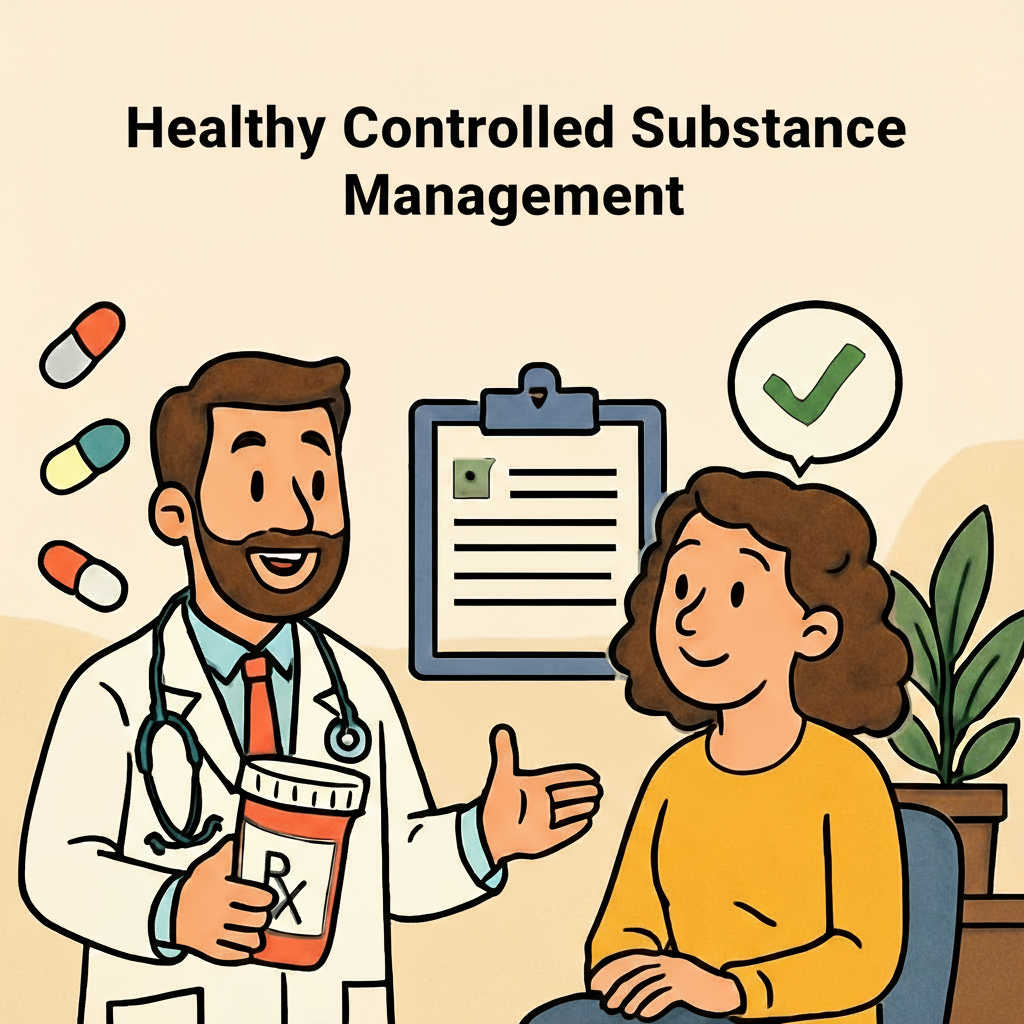
Introduction: Treating the Whole Patient
When managing patients on controlled substances—whether for pain, anxiety, ADHD, or other conditions—behavioral health is often the missing piece.
Prescribing decisions don’t happen in a vacuum; mental health, coping skills, and social factors directly influence patient outcomes and risk.
Integrated care isn’t just a “nice-to-have”—it’s a critical part of safe, effective controlled substance management.
Why Behavioral Health Integration Matters
- Addresses Underlying Conditions
Many patients receiving controlled substances also have comorbid depression, anxiety, trauma, or substance use disorder. - Improves Adherence and Safety
Behavioral health support can help patients stick to treatment plans, manage triggers, and avoid misuse. - Enhances Patient Function
Psychotherapy, counseling, and coping skills training can improve overall quality of life—reducing reliance on medication alone. - Supports Risk Mitigation
Early identification of mental health risk factors can prevent adverse events and regulatory issues.
Ways to Integrate Behavioral Health Into Your Practice
1. On-Site Behavioral Health Providers
- Employ or contract with psychologists, counselors, or social workers to see patients in the same clinic.
- Improves communication and coordination between disciplines.
2. Collaborative Care Models
- Partner with external behavioral health providers using shared care plans and regular case conferences.
- Leverage secure messaging and EHR integration for streamlined communication.
3. Embedded Screening Tools
- Use validated tools like PHQ-9, GAD-7, and AUDIT-C during patient intake and follow-ups.
- Identify behavioral health needs early in the process.
4. Warm Hand-Offs
- Instead of giving patients a referral slip, introduce them to the behavioral health provider before they leave the clinic.
Integrating Behavioral Health Into Compliance Protocols
- Include behavioral health assessment as part of initial risk stratification for controlled substance patients.
- Require behavioral health involvement for high-risk categories (e.g., history of substance use disorder).
- Document all behavioral health interventions in the patient record for continuity and compliance.
Overcoming Common Barriers
- Stigma – Normalize behavioral health as a standard part of comprehensive care.
- Access Issues – Use telehealth services to reach patients in underserved areas.
- Reimbursement Challenges – Understand billing codes for integrated care (e.g., Collaborative Care Model codes).
Benefits for Patients and Providers
- Patients – More holistic treatment, better coping skills, improved outcomes.
- Providers – Reduced risk of misuse or diversion, stronger documentation, better regulatory standing.
- Practice – Differentiates your clinic as offering comprehensive, patient-centered care.
Final Thoughts: Medications Treat Symptoms—Behavioral Health Treats People
If controlled substance management focuses only on medication, you miss the opportunity to address the patient’s broader health needs.
By embedding behavioral health into your compliance and care model, you can improve safety, outcomes, and patient satisfaction.
Treat the mind and the body together, and both the patient and the provider win.
About the Author
Douglas J. Jorgensen, DO, CPC, FAAO, FACOFP
Dr. Doug is a physician, consultant, and national educator on healthcare compliance, integrated care models, and behavioral health strategies in controlled substance prescribing. He works with practices to design systems that unite medical and behavioral care for optimal results.


